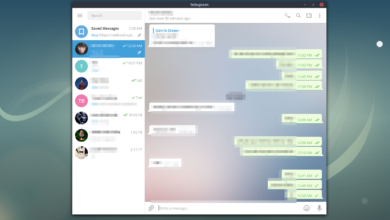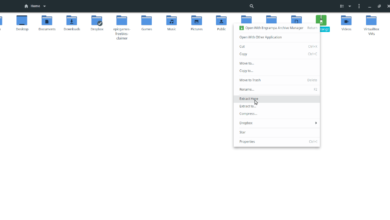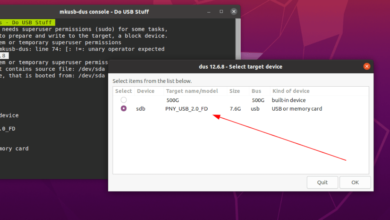Viber is a cross-platform instant messaging application. It is available for all users to use to send texts, images, videos, and audio and visual calls. Viber is a lot like Telegram, and it has native support for Linux.

In this guide, we’ll show you how to download and install the Viber application on Linux. We’ll also go over how to configure the Viber application on Linux.
Installing Viber on Linux
There are a few ways to get Viber working on Linux. The application works on Ubuntu, Debian, Fedora, and OpenSUSE. It also works via Flatpak and Snap.
To start the installation on your Linux operating system, you must open up a terminal window. You can launch a terminal window on the desktop by pressing Ctrl + Alt + T on the keyboard. Alternatively, you can launch a terminal window on the desktop by searching for “Terminal” in the app menu.
Once the terminal window is open and ready to use, follow the installation instructions down below that corresponds with the Linux OS you currently use.
Ubuntu/Debian
You can get Viber installed on Ubuntu and Debian by downloading the latest DEB package to your computer and installing it. To download the Viber DEB package, use the following wget download command below.
wget https://download.cdn.viber.com/cdn/desktop/Linux/viber.deb
After downloading the DEB package to your computer, you can install the Viber application using the apt install command below.
Note: if you are using an older release of Debian that doesn’t have Apt, you’ll need to install Viber with the dpkg command instead.
sudo apt install ./viber.deb
Arch Linux
Viber is available for Arch Linux users in the form of an AUR package. To install Viber, you must first set up the Trizen AUR helper. This program will make the app much easier to get working.
To install the Trizen app, start by setting up the “git” and “base-devel” packages. To do this, use the pacman command down below.
sudo pacman -S git base-devel
Following the installation of the two packages, use the commands below to set up the Trizen application.
git clone https://aur.archlinux.org/trizen.git cd trizen/ makepkg -sri
With the app installed, use the trizen -S command to get the latest release of Viber set up on your Arch Linux PC.
trizen -S viber
Fedora
The Viber app can be set up on Fedora by downloading the latest Viber RPM package file to your computer. To do that, use the wget download command below.
wget https://download.cdn.viber.com/desktop/Linux/viber.rpm
Once the RPM package file is done downloading, you’ll be able to install the application on your system using the dnf install command below.
sudo dnf install viber.rpm
OpenSUSE
OpenSUSE has support for Viber through the Fedora RPM package. However, understand that this support isn’t guaranteed, as the website doesn’t list SUSE as officially supported.
To get the Viber RPM package onto your SUSE system, use the following wget download command. This command will grab the latest RPM and place it into your home folder.
wget https://download.cdn.viber.com/desktop/Linux/viber.rpm
Next, use the zypper install command below to install the Viber RPM package onto OpenSUSE.
sudo zypper install viber.rpm
Snap
Viber is available to install from the Ubuntu snap store. However, you’ll first need to set up the Snap package runtime on your system to get it working. To do that, follow our Snap installation guide.
Now that the Snap runtime is configured, you can use the snap install command to get Viber up and running on your computer.
sudo snap install viber-unofficial
Flatpak
If you use Flatpak, you’ll be able to get the Flatpak release of Viber up and running, provided you have the runtime configured. Unsure of how to set up the Flatpak runtime on your computer? Follow along with our guide on the subject.
With the runtime set up, use the two commands below to get the Viber app working.
flatpak remote-add --if-not-exists flathub https://flathub.org/repo/flathub.flatpakrepo flatpak install flathub com.viber.Viber
Set up Viber on Linux
To use Viber on Linux, you also have to have it set up on your mobile phone. So first, install Viber on your Android or iOS device, and sign in. Once you’ve signed in, click on the menu button in the app, and locate the QR code reader to launch it.

Select the QR code reader button to launch it. Then, open up the Viber app on your Linux system. Then, using your phone and the Viber app, scan the QR code. Once you’ve scanned the QR code, the Viber Linux app will be ready to use.





